Every fall our team reads thousands of essays submitted as part of our Floret Scholarship application process. This is our 11th year of offering workshop scholarships and the process gets richer every time we do it.
It’s such an honor for all of us to get the opportunity to hear from so many deserving people all over the world about their lives and their hopes and dreams for the future.
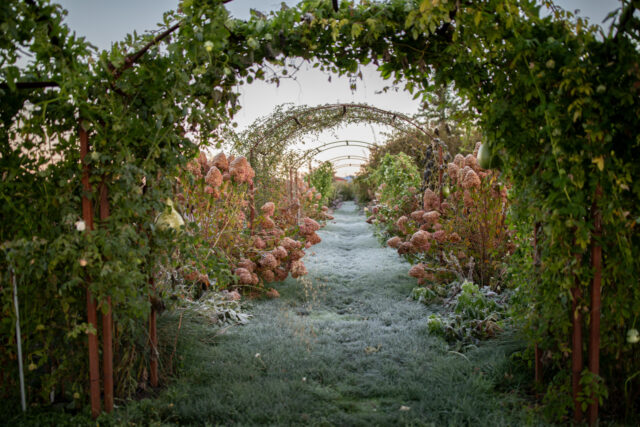 Initially, we had planned on awarding 20 scholarships, but some generous donors came forward allowing us to increase the total to 25—our most ever! Each scholarship recipient will receive free tuition for the Floret Online Workshop which starts in January.
Initially, we had planned on awarding 20 scholarships, but some generous donors came forward allowing us to increase the total to 25—our most ever! Each scholarship recipient will receive free tuition for the Floret Online Workshop which starts in January.
A huge thank you to Kelli Pease of The Flower Remedy, Christine Sousa, Christina Koether, and Red Twig Farms for helping to make this our biggest year yet!
In total, we received 3,545 applications from 77 different countries, including Fiji, Iran, Malta, Mozambique, Namibia, Nepal, North Macedonia, and a few places I have never heard of before like Saint Kitts and Nevis, and Timor-Leste. We also have winners from 8 countries, which is our second most geographically diverse group yet.
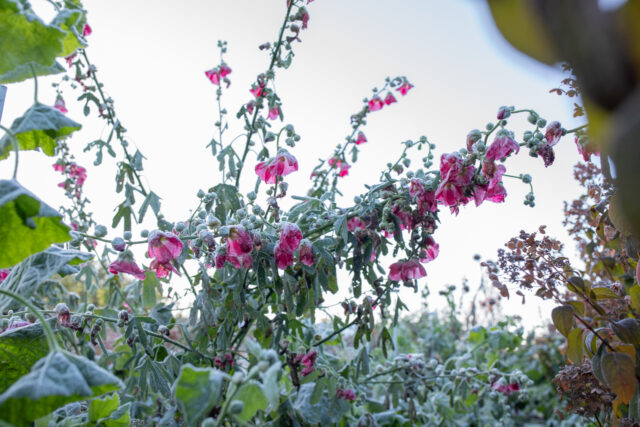 Every year when we’re reading through the applications, some key themes emerge.
Every year when we’re reading through the applications, some key themes emerge.
This year, there were a notable number of teachers wanting to incorporate gardening and nature into their students’ lives. I love the idea of exposing more children to growing things starting at a young age!
As always, there were so many people who wanted to leave their day jobs to pursue flower farming. Many applications mentioned recognizing the significance of family and relationships and the strong urge to prioritize what really matters to them.
Many talked about watching Growing Floret and how the show impacted them in a deep and profound way. They felt seen, sometimes for the first time, and connected to the themes of overcoming obstacles and perseverance through hard work and determination. The series also inspired them to start gardening and helped them get their hands in the dirt.
People are craving beauty, connection, and healing—all things that nature provides.
 A significant number of applicants have come to gardening later in life and expressed a desire to finally go after their dreams of growing flowers. Many of these essays reminded me of Anne Belovich’s spirit and the sentiment she shared in her interview when she said “It is never too late to act on your goals and dreams.”
A significant number of applicants have come to gardening later in life and expressed a desire to finally go after their dreams of growing flowers. Many of these essays reminded me of Anne Belovich’s spirit and the sentiment she shared in her interview when she said “It is never too late to act on your goals and dreams.”
So many people are the primary caregivers for their families, have busy work schedules, or have other challenges that make it difficult to attend in-person classes. They were drawn to the course because the online format offers the opportunity to go at their own pace and to be part of a larger community of like-minded people with similar passions and interests.
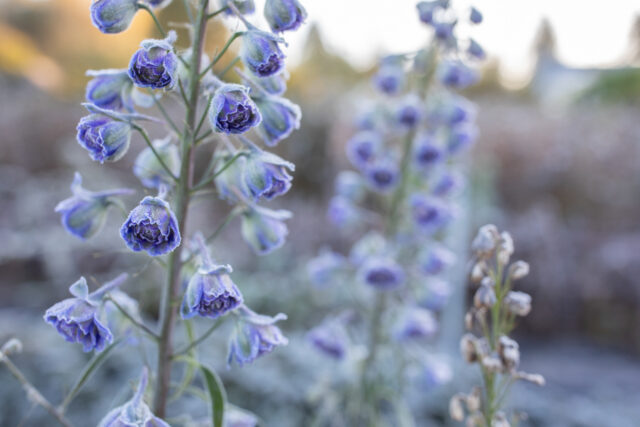 Lastly, there were numerous mentions of imposter syndrome and crippling self-doubt. I know firsthand how paralyzing these feelings can be, but every dream is worthy and it takes courage to go after what lights you up!
Lastly, there were numerous mentions of imposter syndrome and crippling self-doubt. I know firsthand how paralyzing these feelings can be, but every dream is worthy and it takes courage to go after what lights you up!
Reading the winners’ responses has been so rewarding and I am excited to finally introduce you to them. I hope you enjoy reading their inspiring stories.
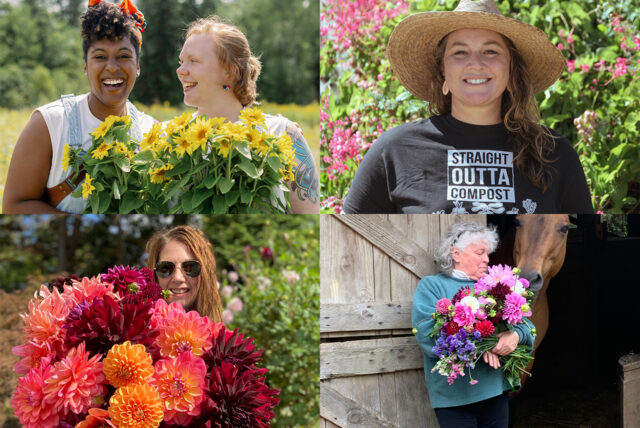 Clary Ager, Ager Lane Flower Farm + Event Space, Big Bras D’Or, Nova Scotia, Canada
Clary Ager, Ager Lane Flower Farm + Event Space, Big Bras D’Or, Nova Scotia, Canada
Clary and her wife Percy moved 3,000 miles to start a community flower farm and event space in Nova Scotia. As a Black, Queer, Disabled Woman, Clary and her wife are “creating a space for people like us to thrive in nature, as was always intended.” During their first season, the “diverse people who [we hosted at our farm Ager Lane] also proved to us there is a need for spaces that are inclusive and accessible—something we are uniquely capable of providing because of our lived experiences.” Pictured above; top left.
Elisa Allen Arias, Baja Sage Farm, El Pescadero, Baja California Sur, Mexico
Elisa manages a diverse, regenerative farm on 1.2 acres in Baja California Sur. The local area is struggling with heavy gentrification, which is destroying its agricultural heritage. The farm is located in a community that “was designed to act as a forward-thinking model for other developments regarding water recycling, soil restoration, and using local materials for building,” but only receives a small portion of its annual operating budget from the local HOA. They are eager to learn more about small-scale flower farming so that they can diversify their income with cut flowers. Pictured above; top right.
Christina Calhoun Thielen, Honey Hollow Blooms, Doylestown, Pennsylvania, United States
Honey Hollow Blooms began when people started asking Christina how they could buy her flowers. Her business has grown and she had already begun planning for the 2024 growing season when she learned that her breast cancer had recurred after 9 years of being cancer-free. Despite this unexpected news, she remains positive for the season ahead. “My goal is to be alive and thriving next season and planning is keeping my mind occupied and keeping my spirits up.” Pictured above; bottom left.
Sue Cambridge, Barnflowers Farm, Merville, British Columbia, Canada
Sue’s dream is to be a full-time flower farmer. She has been working towards this goal since 2015, growing her cutting garden to a third of an acre and then a 7-acre farm lease. She plans to leave her day job in the coming year to focus on the farm full-time. Although she’s dealt with depression and chronic illness, working with flowers has always brought her joy. As she shares “At 69 I’m aware of the passage of time. I would love to keep doing this for another 10 years.” Pictured above; bottom right.
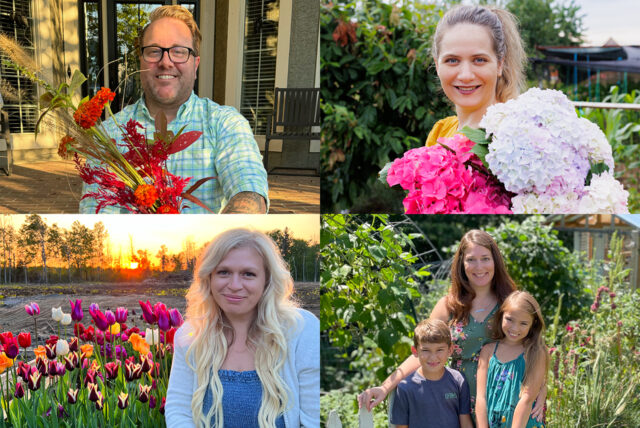 Jeff Chambers, Small Batch Floristry, Overland Park, Kansas, United States
Jeff Chambers, Small Batch Floristry, Overland Park, Kansas, United States
Jeff began flower farming to fill his family’s home with colorful blooms. As his harvest grew, his wife began sharing arrangements with her colleagues, and Small Batch Floristry was born. At the same time, Jeff found himself at a crossroads—the business he’d founded was struggling and eventually closed. He’s now ready to start anew. “It’s one thing to sell a widget and make a dollar, but it’s something else entirely to grow the material, pour yourself into creativity, and have it received with open arms.” Pictured above; top left.
Diana Codrean, Ferma de Hortensii, Sititelec, Bihor, Romania
Diana dreamed of having a hydrangea farm. When the pandemic hit in 2020, she and her partner returned to their home country of Romania to make her dream a reality. They purchased over 1,600 hydrangea cuttings and found a beautiful spot in an isolated village where they started Ferma de Hortensii. Their vision is to develop the land as organically as possible and ultimately make it into a creative center for the women in the village. Pictured above; top right.
Heather Conn, Modest Moss Farm, Kempville, Ontario, Canada
Heather and her family began growing flowers as a therapeutic way of coping with her husband’s Stage IV cancer diagnosis. She wants her children, ages four and seven, to be “involved with the love and passion of growing organic flowers, vegetables, etc.” Even in their first year of growing, they’ve “seen how flowers have increased levels of positive energy, healing, joy, and stress relief. I have found that even though life might not be perfect you can create a life of simplicity and beauty.” Pictured above; bottom left.
Heather Coulter, Riverside High School Emotional Support Program, Ellwood City, Pennsylvania, United States
After a career as a hospice/oncology nurse, Heather became a high school emotional support teacher. She works with many students who have faced trauma, hardships, and mental health struggles. Gardening and growing flowers helped heal some of her own anxiety and depression and her vision is to “bring a therapeutic gardening program and agriculture to our school and students” to increase “their self-confidence as they learn to garden, grow, and use the harvest to share joy and encouragement with others.” Pictured above; bottom right.
 Michelle Cuevas, Amore Materno, Santa Ana, California, United States
Michelle Cuevas, Amore Materno, Santa Ana, California, United States
After experiencing a difficult postpartum with her fourth child, Michelle launched Amore Materno to offer support to women during their postpartum recovery and to decrease the risk of postpartum depression. One of the services they provide is weekly flower deliveries, which use flowers grown by Michelle. Amore Materno works mainly with low-income families and all of the services they offer are free. Michelle hopes to one day use the income from selling her cut flowers to support Amore Materno. Pictured above; top left.
Claire Davison, Rothbury Roots and Shoots, Morpeth, Northumberland, United Kingdom
Claire is a military wife who planted her garden to help heal the pain of losing twins while also relocating to a new area. She believes in spreading kindness and feels that it is her “purpose in life to help other people develop to their fullest potential.” She would love to be able to expand the flower farming side of her garden and offer bouquet subscriptions and workshops, and dreams of one day expanding into growing roses and peonies, which don’t currently have a supplier in Northern England. Pictured above; top right.
Victoria Edwards-Cotten, CottenPicked, Pittsboro, North Carolina, United States
After 5 years of working on established farms in other parts of the state, Victoria and her husband recently began farming in the community where they were born and raised. They are two of only three young Black farmers in their town and serve on the boards of several nonprofits in their area that support BIPOC farmers. They plan to eventually grow flowers for their farm, CottenPicked, on land that Victoria’s great-grandmother purchased as a single Black woman more than 80 years ago. Pictured above; bottom left.
Romi Hall, East Oak Bouquets, Oakland, California, United States
As Romi shares, “East Oak Bouquets was created to honor the East Oakland and Bay Area Black and Brown communities, steward land, and re-define what constitutes beautiful terroir.” Her neighborhood is often overlooked and not considered for its beauty, though in Romi’s experience, there are so many little things that make it a “wonderous and precious ecosystem.” Romi hopes to turn East Oak Bouquets into a “successful urban flower farm that brings neighbors together, cultivates pride, and creates opportunity.” Pictured above; bottom right.
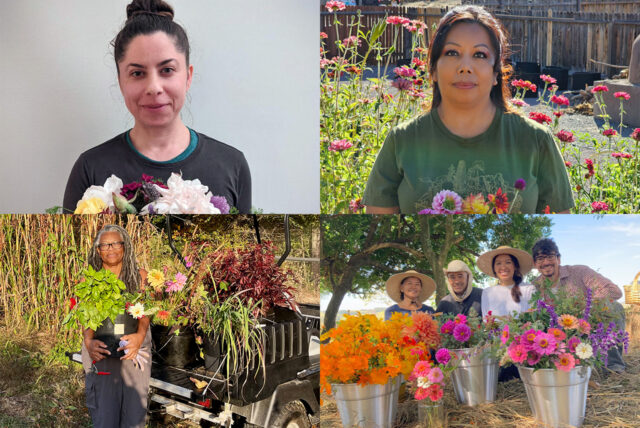 Stacy Jacobsen, Windhorse Farm, Coram, Montana, United States
Stacy Jacobsen, Windhorse Farm, Coram, Montana, United States
Stacy is a conservationist who has worked with the National Park Service in Montana, directing seed collection work across Glacier National Park and others. She hopes to create a flower farm where she features traditional and wildland blooms. As she says “I am excited to weave the elements of my rich background in conservation, seed ecology, native plants, art, teaching, and dharma into the heart of my flower business.” Pictured above; top left.
Leanna Jojola, Moonlight Garden, Albuquerque, New Mexico, United States
Leanna is an enrolled member of the Pueblo of Isleta in New Mexico. The name of her business, Moonlight Garden, comes from the translation of her daughter’s name in the Tewa language. Leanna has farmed her entire life but has developed a fascination with flowers over the last 10 years, especially dahlias. She is the only flower farmer in her community, where most of the agriculture is alfalfa and vegetable crops, and is eager to learn how to maximize her growing space. Pictured above; top right.
Beverly Boone Meek, Flatwood Flower Farm, Calhoun, Georgia, United States
Beverly is an organic cut flower farmer in Northwest Georgia. She grew up on the land she now farms, which her parents purchased “after WWII with the help of a white man, the only way it could be done during Jim Crow.” She is determined to keep the land that her family has held onto through grit and determination and is “committed to having a business that is entwined with the landscape, respectful of the land, community, and the planet.” Pictured above; bottom left.
Renata Ninello, Sítio Sol & Jardim, Presidente Prudente, São Paulo, Brazil
During the pandemic, Renata and her family began working on their dream of regenerating their land in southeast Brazil. “Our project is to reforest and transform our place into an ecological sanctuary for pollinators and a source of well-being for people, where new generations can learn about nature preservation.” Since then they’ve been participating in their local market with bouquets, herbs, and honey. As Renata shares, “It’s exciting to feel the positivity and impact nature and our work has brought to the community.” Pictured above; bottom right.
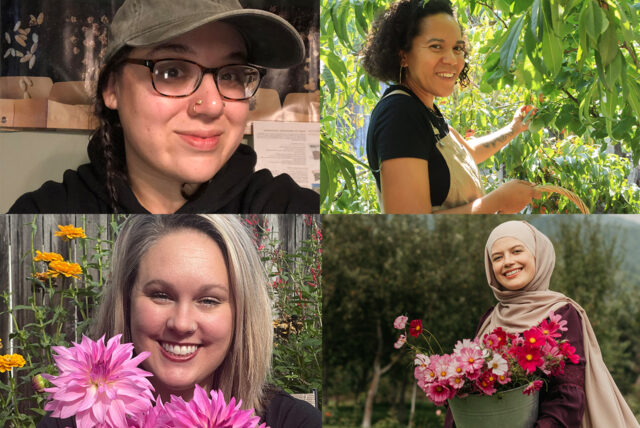 Florentina Rodriguez, Flora Seeds, Dayton, Ohio, United States
Florentina Rodriguez, Flora Seeds, Dayton, Ohio, United States
Florentina works as the farm manager at Eden’s Harvest, a regenerative urban farm whose mission is “to increase healthy, culturally appropriate food access through the concept of food sovereignty.” In addition to her work at Eden’s Harvest, Florentina has also started her own business, Flora Seeds, “to provide seed education and build/operate shared community resources like seed libraries.” She shares her knowledge “on a mutual aid basis to support beginning farmers and local growing/gardening groups in my community.” Pictured above; left.
Alexys Romo, Black Thumb Farm, Los Angeles, California, United States
Alexys is the founder of Black Thumb Farm, a nonprofit urban farm that is “dedicated to empowering BIPOC teenagers across the San Fernando Valley through farming and gardening.” Alexys’ own love for flowers blossomed from gardening with her grandfather. As she shares, “I make my grandpa proud when I show him all that we do at Black Thumb Farm. … The young people who come through our free programs experience the pure joy that comes with growing flowers, and these underserved BIPOC youth could use more pure joy.” Pictured above; right.
Courtney Small, Oak Elementary, Albany, Oregon, United States
Courtney is a first-grade teacher who hopes to expand the garden at her elementary school. Her students love collecting flowers from the garden for bouquets and she hopes to continue this on an even bigger scale in the future. She believes that “I really have the opportunity to make a big impact in our community through spreading and sharing the love and magic of flowers,” and even hopes to one day sell flowers from the garden as a fundraiser for the school. Pictured above; bottom left.
Melika Tursic Musinovic, Fotosinteza, Sarajevo, Glavaticevo, Bosnia and Herzegovina
Melika is a photographer and the founder of Fotosinteza, a sustainable, eco-friendly flower farm in Bosnia and Herzegovina. While she initially only planned to grow flowers for herself to photograph, she fell in love with the process so much that she expanded and began growing more. Melika’s farm is the first of its kind in her country and she’s found it challenging to source organic supplies and seeds. She hopes to one day be able to sell seeds to other farmers in her area. Pictured above; bottom right.
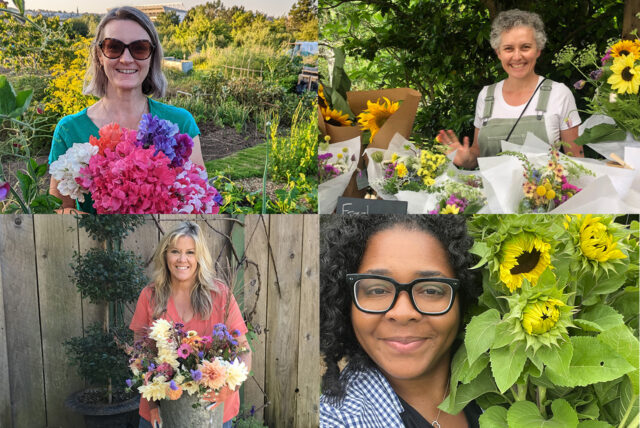 Ilene van der Schyff, Buds & Blooms Flower Farm, Wilderness, Western Cape, South Africa
Ilene van der Schyff, Buds & Blooms Flower Farm, Wilderness, Western Cape, South Africa
Ilene and her friend started Buds & Blooms Flower Farm with the intention of growing cut flower varieties that aren’t otherwise available in South Africa. They soon discovered that there was also a lack of information and resources for cut flower farming in their area. Their dream is to take everything they learn, “apply and adapt it to our area, to eventually build a business big enough to educate others, support other families, and give them a helping hand to build a good sustainable career for themselves.” Not pictured.
Anneke van Elijkern, St. Peter’s Hospice, Bristol, England, United Kingdom
Anneke manages the gardens at St. Peter’s Hospice, which provides “help and support to adults living with a progressive life-limiting illness.” The Hospice grounds include beautiful, therapeutic gardens and Anneke plans to establish cut flower beds in the gardens next year. Flowers grown in the gardens will be used throughout the Hospice and will also be sold to raise money. “A successful cut flower project could bring in a lot of revenue for the Hospice. … I want to get it right!” Pictured above; top left.
Marisa Vodanovich, Urban Floral Farmlet, Auckland, New Zealand
Marisa started Urban Floral Farmlet in 2021 after realizing that the people in her life were more important than her corporate career. Unfortunately, her first growing season coincided with a series of catastrophic weather events in New Zealand that hindered her new farm’s ability to produce a viable crop. Despite these setbacks, Marisa has become known as “Te Atatu Peninsula’s flower farmer.” “[W]henever I sell a bouquet I see my customer’s faces light up with joy—I’d like to see and spread more of that in my community.” Pictured above; top right.
Lauren Wise, Cedar Hill Farm and Gardens, South Hampton, New Hampshire, United States
For Lauren Wise, “a good day of gardening is a good day.” She and her husband recently remortgaged their home so that they could help pay for an addition they built for her elderly parents to move into. She grew up in her parents’ plant nursery and now loves gardening with her 90-year-old father. She hopes to use “the gift I was given by both my parents, my community, and my passion to continue to learn and further my gardening journey.” Pictured above; bottom left.
Melanie Wright, Agape Farm, Bowie, Maryland, United States
Melanie is a School Garden Educator and started Agape Farm “to spread love through food and flowers.” In addition to growing seasonal produce to fight food insecurity in her community, Agape Farm plans to offer a program called “Brown Girls Bloom” that “aims to provide girls a safe space to grow and bloom by learning about self-love and wellness through the practice of growing flowers.” “Brown Girls Bloom will help girls feel connected, build community, and embrace their identities while learning about growing flowers.” Pictured above; bottom right.
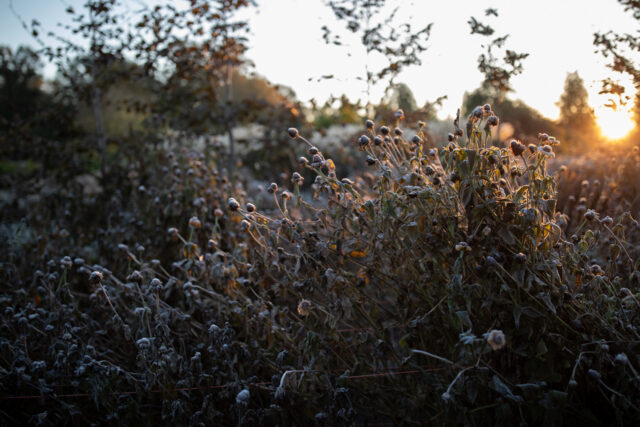 Please join me in congratulating the scholarship recipients for the Class of 2024 by leaving a comment below. The team and I are thrilled to have this amazing group join us for our upcoming workshop.
Please join me in congratulating the scholarship recipients for the Class of 2024 by leaving a comment below. The team and I are thrilled to have this amazing group join us for our upcoming workshop.
If you’d like to learn more about the Floret Online Workshop be sure to visit our workshop page.
Please note: If your comment doesn’t show up right away, sit tight; we have a spam filter that requires us to approve comments before they are published.

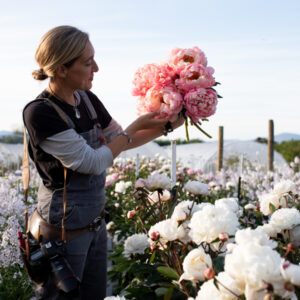

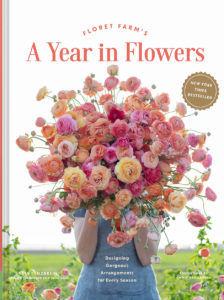
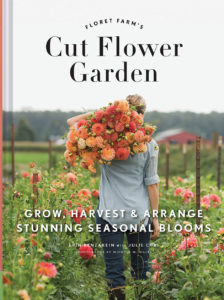


Pat on
Congratulations to all of you! I hope you experience the same excitement as I have with the class! Best wishes to each of you and may your dreams come true!